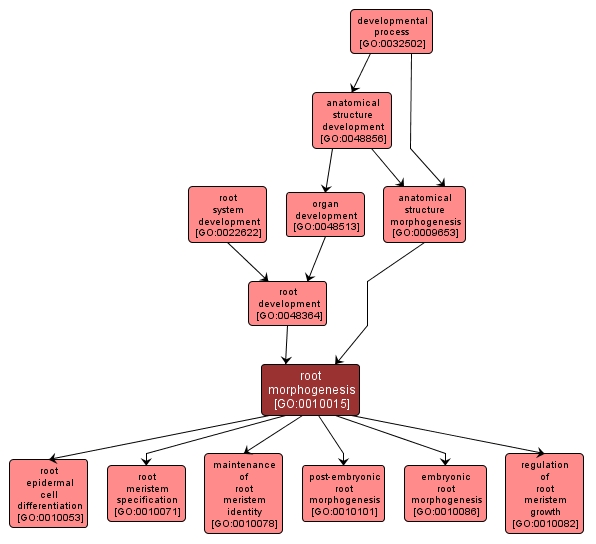| Desc: |
The process by which the anatomical structures of roots are generated and organized. Morphogenesis pertains to the creation of form. The root is the usually underground part of a seed plant body that originates from the hypocotyl, functions as an organ of absorption, aeration, and food storage or as a means of anchorage and support. |














